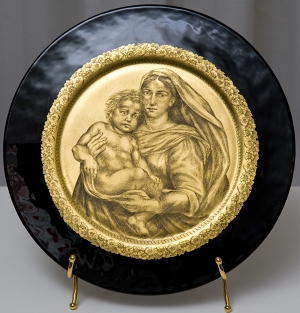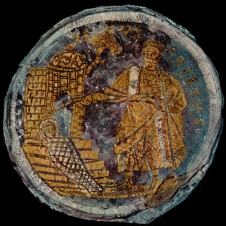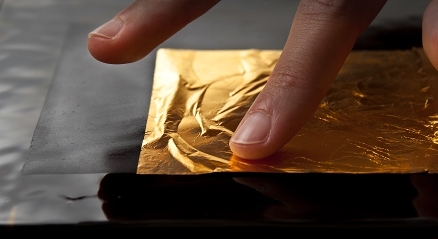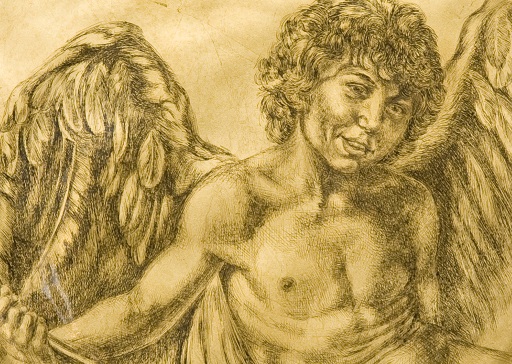Sara uses
only authentic Murano glass, since, thanks to its special chemical
formula, it's probably the only kind of glass that can afford to be
re-melted in the kiln without the risk of bending or cracking.

The
strictly manual working of the objects to be decorated is guaranteed by
the absence of the "joint", typical of vases and chalices casted in a
mould, or the presence of the so-called "belly button" dued to the
barrel of the glass blower, or again by the irregular surface of the
hammer-flattened plates.
The
gold leaf used by Sara is hand-flattened by local artesans and is
obtained from the purest gold ingots, the only one that can give that
rich tones and that unmistakeable reflexes that are exclusive features
of the noblest among metals.
|
 Graffito (the engaraving) on gold leaf is a very ancient technique.
Graffito (the engaraving) on gold leaf is a very ancient technique.

 First
examples of engraved gold leaf are found in early Christian art,
particularly on medals made up by two glass halves melted togheter with
the gold leaf in between.
First
examples of engraved gold leaf are found in early Christian art,
particularly on medals made up by two glass halves melted togheter with
the gold leaf in between. The
technique consists in applying the gold leaf to the glass with the aid
of a special glue. Then it's the time to engrave with a very thin tip
made of copper, a quite soft metal that avoids to ruin the underlying
glass.
The
technique consists in applying the gold leaf to the glass with the aid
of a special glue. Then it's the time to engrave with a very thin tip
made of copper, a quite soft metal that avoids to ruin the underlying
glass.
 History,
centuries-old traditions, precious materials and the taste for details'
perfection are the ingredients that make Sara's works unique and
that we believe can satisfy the most demanding too.
History,
centuries-old traditions, precious materials and the taste for details'
perfection are the ingredients that make Sara's works unique and
that we believe can satisfy the most demanding too.